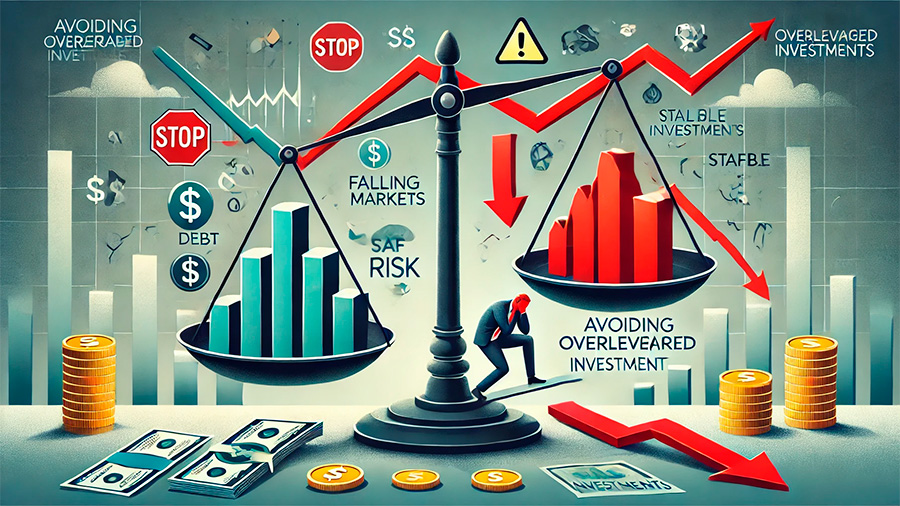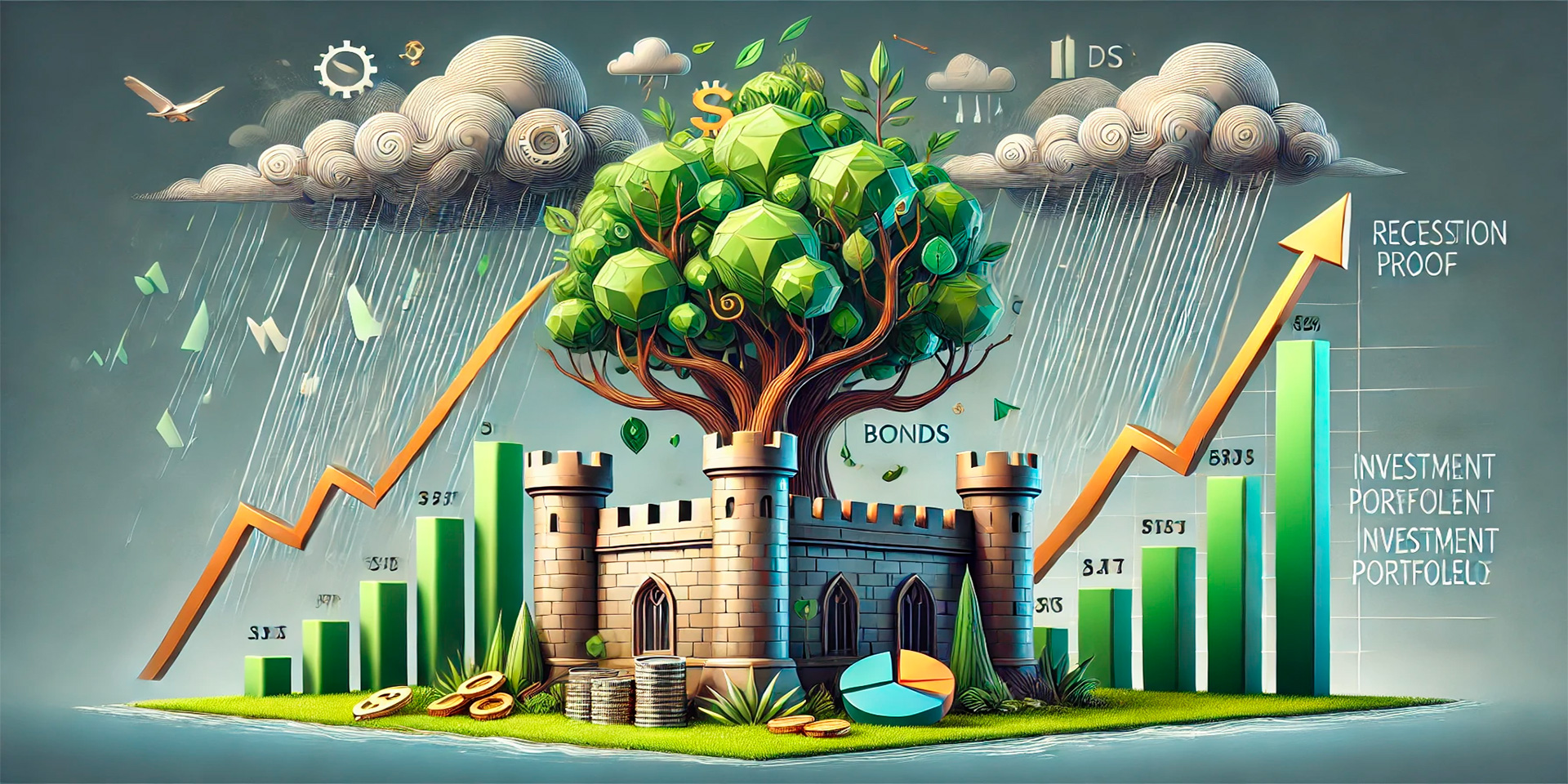Recessions are an inevitable part of the economic cycle, and while they can create uncertainty for investors, a well-constructed portfolio can help you weather economic downturns. Building a recession-proof investment portfolio doesn’t mean avoiding all losses, but it does involve minimizing the impact of a recession on your overall financial health. By selecting the right mix of assets and following strategies that prioritize stability and resilience, you can protect your investments during times of economic contraction.
Understanding the Impact of Recessions on Investments
During a recession, economic activity slows down, businesses see reduced revenues, and unemployment rates tend to rise. As a result, stock prices often fall, especially in sectors closely tied to consumer spending and economic growth. Investors may experience increased volatility and a temporary drop in portfolio values. However, not all assets perform poorly during recessions. Some investments, such as bonds or defensive stocks, tend to hold up better and can provide much-needed stability when the economy falters.
By understanding how different assets respond to economic cycles, you can create a portfolio that is better positioned to handle the ups and downs of a recession.
Diversification Is Key to Recession-Proofing
Diversification is one of the most effective strategies for building a recession-proof portfolio. It involves spreading your investments across various asset classes, sectors, and geographic regions to reduce your exposure to any one type of risk. In a recession, certain assets or sectors may underperform, while others might continue to thrive or experience less volatility. A diversified portfolio helps to balance these fluctuations, reducing the overall risk.
Investors should aim for a mix of stocks, bonds, and alternative assets like real estate or commodities. This strategy ensures that if one asset class performs poorly during a recession, others may provide stability or even gains. For example, stocks in defensive sectors such as healthcare and utilities often perform better during recessions because these industries provide essential services that people continue to use regardless of economic conditions. Bonds, especially government bonds, tend to be less volatile and can act as a safe haven during turbulent times.
Defensive Sectors and Stock Selection
Choosing stocks from defensive sectors can help protect your portfolio from severe downturns. Defensive sectors include industries that are less affected by economic cycles, such as consumer staples, healthcare, and utilities. Companies in these sectors often provide products and services that people need regardless of economic conditions. For example, healthcare companies, which supply medical products or services, tend to maintain stable revenues even in times of recession.
Additionally, dividend-paying stocks can offer another layer of protection. Companies that regularly pay dividends tend to be financially stable, with strong cash flow and a commitment to returning value to shareholders. During a recession, dividend payments can provide a steady income stream, even if stock prices decline.

Fixed-Income Investments for Stability
Bonds, especially government bonds, are a key component of a recession-proof portfolio. Fixed-income investments like bonds provide a more predictable return compared to stocks, making them less vulnerable to economic downturns. Government bonds, in particular, are seen as safe investments because they are backed by the full faith and credit of the government. During recessions, when stock markets become volatile, bonds often rise in value as investors seek stability.
Corporate bonds can also be a good addition, particularly bonds from highly rated companies. Investment-grade corporate bonds typically offer higher returns than government bonds, while still providing relative safety during economic uncertainty. However, it’s important to focus on bonds from companies with strong balance sheets that are more likely to meet their debt obligations, even during economic stress.
Short-Term vs. Long-Term Bonds
When constructing your bond portfolio, it’s essential to consider the duration of your bonds. Short-term bonds tend to be less sensitive to interest rate fluctuations, making them a safer choice during periods of economic instability. Long-term bonds, while offering higher yields, are more affected by rising interest rates, which can occur during or after a recession as governments and central banks adjust policies to stimulate economic growth.
A mix of short-term and long-term bonds can provide both stability and income while mitigating interest rate risk.
Cash Reserves and Liquidity
Having a portion of your portfolio in cash or cash equivalents is another important aspect of building a recession-proof investment strategy. Cash provides liquidity, allowing you to meet short-term financial needs without having to sell investments at a loss during a downturn. This buffer gives you flexibility and prevents you from locking in losses if you need access to money while the market is down.
In addition to cash, money market funds or certificates of deposit (CDs) offer safe, interest-bearing options for maintaining liquidity during a recession. These instruments provide a stable return, albeit smaller than stocks or bonds, and allow you to keep some funds readily available.
Why Liquidity Matters
Maintaining liquidity ensures that you won’t have to sell off long-term investments during a market downturn. It also positions you to take advantage of opportunities that may arise during a recession, such as buying undervalued stocks or assets. Keeping a portion of your portfolio liquid provides financial security and allows you to weather the storm without making reactive decisions.
Real Estate and Alternative Assets
Including real estate and alternative investments in your portfolio can help diversify your holdings and reduce your exposure to traditional market risks. Real estate often holds its value during recessions, particularly rental properties that generate consistent income. Real Estate Investment Trusts (REITs) provide an accessible way to invest in real estate without directly owning property, offering the potential for steady dividends.
Commodities, such as gold or precious metals, are another alternative asset class to consider. Historically, gold has been seen as a safe-haven investment, holding or even increasing in value during times of economic uncertainty. Including commodities in your portfolio can act as a hedge against inflation and market volatility.
Real Estate’s Role in a Recession
While the real estate market may slow during a recession, properties that generate rental income can still provide a reliable source of cash flow. Investing in residential or commercial properties with stable, long-term tenants can help mitigate risk, as these assets may continue to produce income even when other sectors of the economy are struggling.

Avoiding Overleveraged Investments
During times of economic expansion, it can be tempting to take on more risk by using leverage—borrowing money to invest in assets that have the potential for higher returns. However, leverage can increase your vulnerability during a recession. If the value of your investments declines, you may still be required to repay your loans, which can lead to significant financial losses.
To build a recession-proof portfolio, it’s essential to avoid overleveraging and focus on investments that you can comfortably hold during market downturns. Staying within your risk tolerance and avoiding excessive debt ensures that you won’t face margin calls or be forced to sell assets at unfavorable prices.
Staying Conservative with Debt
Maintaining a conservative approach to debt and leverage is especially important in times of economic uncertainty. Focus on investments that generate steady income or have long-term growth potential without relying heavily on borrowed funds. This strategy reduces your exposure to financial shocks and ensures that your portfolio can withstand the pressures of a recession.
Rebalancing and Staying Disciplined
A key part of managing a recession-proof portfolio is regularly rebalancing your investments. As markets fluctuate, your portfolio’s asset allocation may drift from its original targets. Rebalancing involves adjusting your holdings to maintain your desired mix of stocks, bonds, and other assets. This ensures that your portfolio remains aligned with your risk tolerance and financial goals.
Staying disciplined during a recession is also crucial. It’s natural to feel anxious when markets decline, but reacting emotionally can lead to poor investment decisions. Instead of panic selling, focus on your long-term goals and stick to your investment strategy. Historically, markets recover after downturns, and staying invested through the lows often results in stronger returns over time.
Taking Advantage of Opportunities
While recessions create challenges, they can also offer opportunities to buy high-quality assets at discounted prices. When markets decline, stocks and other investments may become undervalued, providing attractive entry points for long-term investors. If you have liquidity and can afford to take on some risk, a recession can be a good time to add to your portfolio at lower prices.
Conclusion: Building a Portfolio That Can Weather Any Storm
While recessions are inevitable, they don’t have to derail your investment plans. By focusing on diversification, including defensive sectors, bonds, real estate, and alternative assets, you can build a portfolio that’s resilient during economic downturns. Maintaining liquidity, avoiding overleveraging, and staying disciplined in your approach will help you manage risk and take advantage of opportunities when they arise. With careful planning and a focus on long-term growth, your portfolio can withstand the challenges of a recession and continue to grow over time.

